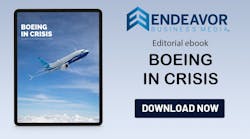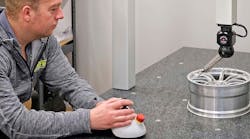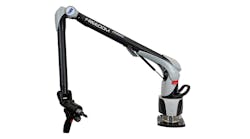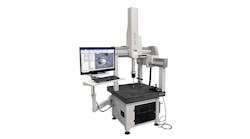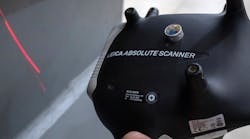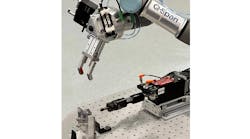ISO 14001 helps preserve the environment and the bottom dollar.
Environmental management system model for ISO 14001. Adapted from ISO 140011996. © International Organization for Standardization.
Government backing, enhanced environ-mental performance, improved operations, cost savings — with such factors driving the ISO 14001 standard, it's not surprising that ISO 14001 is gaining a widening foothold around the world. As of September 1998, approximately 5,500 individual sites had been registered to ISO 14001 worldwide. Of these, over 1,000 were in Japan, while 190 were in the U.S. This does not, of course, count organizations that are in the registration process or that have implemented ISO 14001 without seeking registration.
These figures are comparable to those for companies that had registered to ISO 9000 two years after that quality management system standard was finalized. No doubt the momentum toward ISO 14001 will build as pressures mount. It's reasonable to believe that the growth of ISO 14001 will parallel that of ISO 9001.
Drivers for ISO 14001 are gaining strength. For example, IBM is "encour-aging" its suppliers to implement an ISO 14001-based Environmental Management System (EMS) because it is "interested in doing business with environ-mentally responsible suppliers." Ford has sent a similar letter to its suppliers.
This pattern — in which major corporations bring pressure on suppliers — was a factor in the spread of ISO 9000.
It led, for example, to the development of QS 9000, the automotive industry's version of ISO 9000, which the Big Three pressured suppliers to adopt. Fortunately, ISO 14001 was designed to avoid the faults many have found with ISO 9000, so it specifically does not require the amount of documentation that critics say plagues ISO 9000. In addition, the Standard was developed to balance business needs with environmental protection. Because it does not establish environmental performance requirements, it is within the reach of both powerful multinationals that can afford the "best available technology" as well as small businesses in the developing world that lack similar resources.
Since the Standard was finalized in 1996, much has been learned about how to efficiently implement it. Companies have learned to use the Standard to streamline processes and improve management control while achieving environmental objectives. Hitachi, Warner Lambert, Philips Electronics, and many other companies have used the Standard to reduce costs and increase profitability.
Build on existing systems.
Companies generally have elements of an EMS in place already. For example, nearly every company has some form of system to comply with environmental regulations. This is a good start, because regulatory compliance is an important part of ISO 14001. Many companies also have a quality management system like ISO 9000, which provides a broad framework on which to build.
To find out where they are and where they have to go, companies should begin with a gap assessment to compare existing systems to ISO 14001. Whether this is an informal analysis or a formal comprehensive audit, it's the essential first step.
If you have a document control system for quality, you can easily tweak it to handle environmental documents. If you lack a comprehensive corrective action system, you'll have to implement one. The gap assessment will provide this guidance.
Focus on improvement
Many companies have found ISO 14001 useful in improving operations. The experience of Ultra-Additives, Paterson, N.J., a 75-person chemical company, is a case in point. In analyzing its impact on the environment, the company realized that the disposable drums in which it packaged its product created an enormous amount of waste. This wasn't a regulatory problem, but is was an opportunity for improvement.
The company investigated the possibility of using reusable drums. Its domestic customers were lukewarm to this option, but its international market, where green solutions are prized, was very receptive. So Ultra-Additives is implementing a reusable drum program in Europe and elsewhere internationally. This is better for the environment, the customers like it, and it's generating modest cost savings.
Identify all environmental aspects and impacts.
The Standard specifically requires a company to identify all the aspects of its operations that affect the environment, gauge their impact, and then evaluate the significant impacts relative to one another.
Nearly every company finds this analysis a major challenge. The scope of ISO 14001 is very broad, encompassing everything from the sales office, to the parking lot, to manufacturing operations. Most companies have never done this kind of analysis and the Standard doesn't prescribe a method. Each company works out an approach best suited to its needs. However, one main directive is to be as thorough as possible.
Set a reasonable and realistic policy
The Standard requires an environmental policy that addresses continual improvement, regulatory compliance, and prevention instead of reactionary methods. Management must be committed to whatever is stated in its company policy, because the policy will be the cornerstone of the EMS and available to the public.
It should balance good public relations with what is reasonable and realistically attainable for each company. DuPont, in its policy for safety, health, and the environment, sets a goal of zero injuries, illnesses, and incidents, based on its long-standing safety approach that all incidents and injuries are preventable. Such a goal may alarm some companies, but the important thing to remember is that the Standard allows each company to establish its own policies and priorities, appropriate to its own culture and business needs.
Set environmental objectives and targets to achieve benefits
One of the reasons policy is so important is that the Standard requires that objectives and targets are based on it. For example, if your policy says you will use energy efficiently, you might have an objective to reduce your consumption of electricity and target the reduction at 10% a year.
But it's entirely up to the organization to choose what objectives and targets to aim for. Objectives should always balance environ-mental values with financial and business goals. ISO 14001 emphasizes that EMS should be a part of overall business management, not a blueprint to use for saving the world.
Don't over document
When the subject of documentation for ISO 14001 comes up, most companies cringe, a result of the legacy of ISO 9000, which is often misinterpreted as focusing on paperwork.
The authors of ISO 14001 went to great pains to counter this m i s understanding . The Stan-dard's section about documentation is fewer than 30 words. This brevity was purposeful: most decisions about EMS documentation are left up to individual companies.
Emphasizing flexibility, the Standard lays down few requirements: you must describe "the core elements" of your EMS, for example, the areas covered by ISO 14001. This description must also explain how these elements interact and provide reference to more detailed documentation where appropriate.
Choose the right registrar
If you decide to have your EMS registered, shop around for a registrar. Make sure you ask what the firm's expectations are for documentation. If the firm has very specific ideas about what formats to use and requires that you have a manual, find another registrar.
Measure
Assessment necessary ISO 14001. Standard you to measure environmental characteristics as well as progress in meeting objectives and targets.
It also requires you to conduct regularly scheduled internal audits to ensure that the EMS is meeting expectations.
Like ISO 9000, ISO 14001 also requires a regular management review in which an organization's top managers scrutinize the overall effectiveness of the EMS. To get maximum benefit from the Standard, the review should be used as a key tool for both environmental and business improvement.
Instead of simply looking at the details of audits and the kinds of corrective actions being taken, management should use the review strategically to look for ways to reduce costs and improve profits.
A case in point: When Danfoss Fluid Power, Racine, Wis., adopted ISO 9000, the mobile hydraulics manufacturer implemented a management review system that the company is adapting for ISO 14001.
"At quarterly meetings, key managers from all our functions provide information so we can look at trends and customer satisfaction," explains Randy Karasti, quality assurance manager at Danfoss. "When we see trends, we'll take preventative actions to head off a potential problem or corrective action to make sure a problem doesn't reoccur. A while back, we received complaints from customers that they weren't getting literature, such as catalogues and service manuals fast enough, so we fixed that. In another example, we could see that customer requirements were increasing for a particular product line. To head off potential problems, we upgraded our machining capabilities in one machining cell.
As to the future, says Karasti, "At first we'll keep our management review system for ISO 9001, but after a year or so when we've got our EMS up and running, we'll combine the two."
A field report
- Hitachi Research Laboratory, Hitachi City, Japan, saved energy — and $60,000 per year — simply by turning off the lights during lunch.
- Warner Lambert, Lititz, Pa., eliminated CFCs by installing a chilled water system and saved $164,000 a year. The facility also reduced wastestreams and packaging wastes, saving $1 million a year.
- Philips Electronics achieved a 25% reduction in energy use and accompanying costs at each of its 250 facilities worldwide and a 15% reduction in packaging materials.
- Western Digital, Irvine, Calif., eliminated disposable packaging and reduced lighting costs for an annual savings of over $100,000.
- Dresser Industries, Houston, eliminated a phosphate pretreatment plant for wastewater and saved $100,000 per year. The company also saved nearly $1 million annually by converting from silk-screened labels to vinyl decals.






